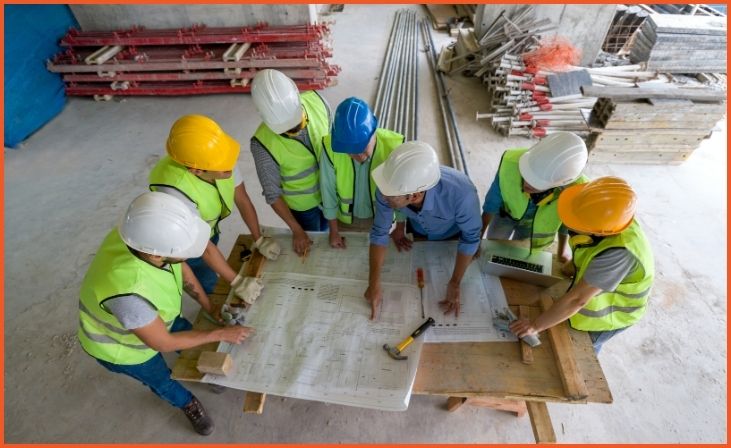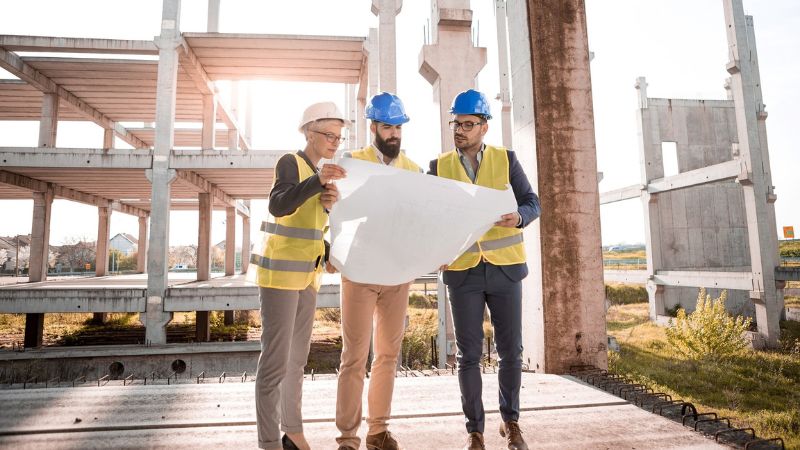Any construction project that is successful is built on effective communication. Project outcomes can be greatly improved by having regular and transparent communication between all parties involved, including clients, contractors, and team members. Misunderstandings and misunderstandings can result in expensive mistakes, delays, and even safety risks. You can increase teamwork, expedite processes, and make sure that everyone is in agreement by putting strategic communication practices into place. This blog post will discuss ten crucial suggestions for improving communication in the construction industry that will help you create a more cooperative and productive workplace. These pointers will facilitate not only a more seamless project completion process but also strengthen professional bonds.
10 Tips For Better Construction Communication
1. Establish Clear Communication Channels

For everyone working on the project to understand when and how to exchange information, it is essential to establish clear communication routes. This involves setting up specific platforms for different types of communication. For instance, use email for formal updates, messaging apps for quick questions, and project management software for task tracking and documentation. Defining these channels helps prevent information from getting lost and ensures that everyone knows where to look for updates and important messages.
Read Also: Key Considerations When Constructing Tall Buildings
2. Regularly Schedule Meetings
To keep everyone informed, regular meetings are crucial. Weekly progress reports, monthly strategy sessions, or daily stand-ups might be these meetings. The key is consistency and ensuring that all relevant parties are present. Meetings provide an opportunity to address issues, update progress, and adjust plans as necessary. They also foster a sense of teamwork and allow for real-time feedback and discussion, which is crucial for maintaining alignment among all stakeholders.
3. Use Visual Tools
Visual tools such as diagrams, blueprints, and 3D models can significantly enhance understanding and communication in construction projects. These resources aid in presenting difficult information in a way that is simple to understand. They can be used in meetings, shared digitally, or displayed on-site to ensure everyone has a clear understanding of the project scope, timelines, and specific tasks. Visual tools can also help in identifying potential issues before they become problems, thus allowing for proactive management.
4. Implement Project Management Software
Project management software is a powerful tool for enhancing communication and collaboration. Platforms like Procore, Buildertrend, and CoConstruct provide centralized locations for all project-related information, including schedules, budgets, task lists, and documentation. These tools enable real-time updates and notifications, ensuring that everyone has access to the latest information. They also facilitate better tracking of progress and accountability among team members, reducing the risk of miscommunication and errors.
5. Foster an Open Communication Culture

Encouraging an open communication culture is essential for effective collaboration. Team members should feel comfortable sharing ideas, asking questions, and reporting issues without fear of negative repercussions. This can be achieved by promoting a positive and inclusive work environment where feedback is valued and respected. Regularly soliciting input from all team members and addressing their concerns promptly can help build trust and improve overall communication.
6. Provide Training and Resources
Investing in communication training and resources for your team can pay significant dividends. This can include workshops on effective communication techniques, conflict resolution, and the use of communication tools. Providing these resources ensures that everyone has the skills and knowledge necessary to communicate effectively. Additionally, ongoing training can help keep everyone up to date with the latest communication technologies and best practices, further enhancing overall project communication.
7. Define Roles and Responsibilities
Clearly defining roles and responsibilities is crucial for effective communication. Every team member has to be aware of their own responsibilities and how they fit into the larger project. This clarity helps prevent overlap, confusion, and gaps in communication. When everyone knows who is responsible for what, it is easier to direct questions and information to the right people, ensuring that issues are addressed quickly and efficiently.
8. Utilize Mobile Technology
Mobile technology can greatly enhance communication on construction sites. Smartphones and tablets allow team members to access and share information in real time, regardless of their location. Mobile apps designed for construction management can facilitate instant communication, photo and document sharing, and real-time updates. This technology ensures that everyone has access to the latest information and can communicate more efficiently, reducing delays and improving productivity.
9. Document Everything

Thorough documentation is a cornerstone of effective construction communication. Keeping detailed records of meetings, decisions, changes, and progress helps ensure that everyone is on the same page. Documentation provides a reference point for resolving disputes, tracking progress, and ensuring compliance with regulations. It also helps in transferring knowledge and information to new team members or stakeholders, maintaining continuity and clarity throughout the project.
Read Also: Tips For Choosing Your Next Construction Contractor
10. Conduct Regular Reviews and Feedback Sessions
Regular reviews and feedback sessions are critical for continuous improvement. These sessions provide an opportunity to assess what is working well and what needs improvement. Gathering feedback from all team members helps identify communication bottlenecks and areas for enhancement. Implementing changes based on this feedback ensures that communication practices evolve and improve over time, leading to more successful project outcomes.
Conclusion
Improving communication in construction projects is crucial for success. By adopting these 10 tips, you can minimize misunderstandings, enhance collaboration, and ensure that projects are completed on time and within budget. Effective communication fosters a positive work environment and leads to better project outcomes. Implement these strategies to see a noticeable improvement in your construction communication practices.
FAQs
How can I ensure that everyone is on the same page during a construction project?
Regular meetings, clear documentation, and open lines of communication help ensure everyone is aligned with project goals and progress.
What tools can aid in better construction communication?
Project management software, mobile apps, and collaborative platforms like Slack or Trello can significantly improve communication and coordination among team members.



